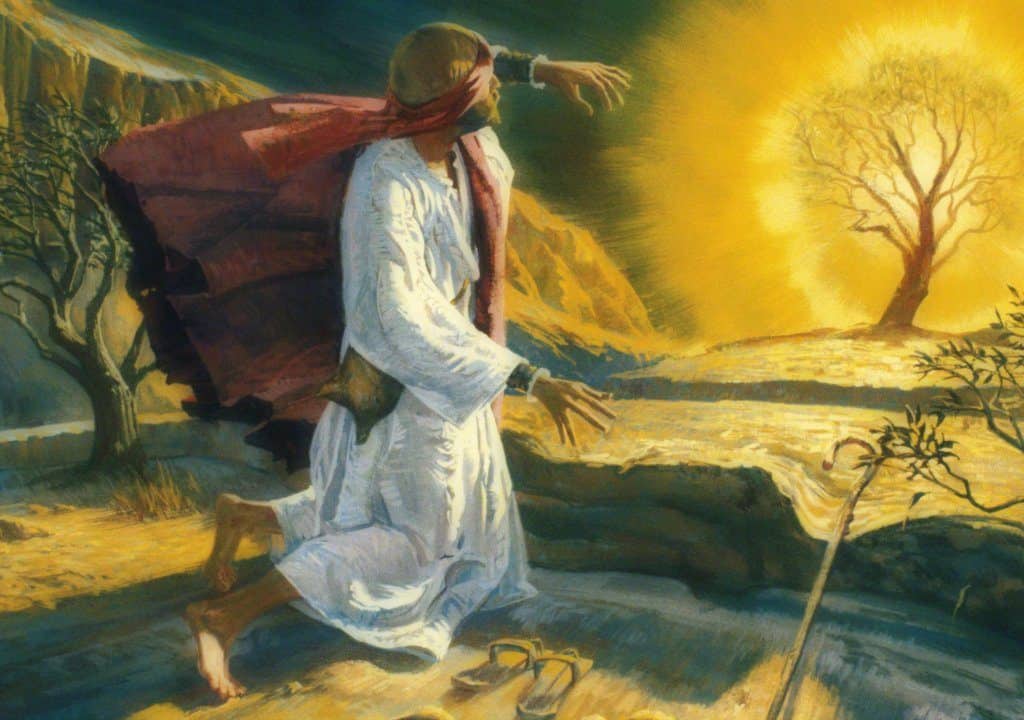Today we delve into a fascinating topic of Kabbalah: the story of the first plague, the Blood Plague and the role of two brothers in its manifestation. It is framed in the portion of Vaera where we see Aharon by divine guidance hitting the waters of the Nile River with his rod giving rise to this phenomenon.
The connection between Moses, the Nile and the Blood Plague
But why Aharon? Why not Moses, leader of the Hebrews and receiver of God’s commands?
The Midrash questions this point and Rashi, one of the great commentators of the Torah, provides us with an illuminating vision.
Moses, as we remember, was placed on the Nile by his mother to save him from Pharaoh’s edict to kill all newborn Hebrew males. The river became their savior, their protective shield.
This fact linked Moses to the Nile in a silent pact of gratitude. Therefore, when the time came to punish the river, transforming its waters into blood and causing frogs to emerge, it was Aaron, not Moshe, who carried out the act.
Here we are asked a question that may seem strange: could a river have feelings? , could Moses by hitting hurt these feelings?
Although at first glance it may seem absurd, this story leads us to a concept deeply embedded in Kabbalah: the idea that everything in our world has consciousness.
Recognizing Consciousness in the Inanimate: Spiritual Lessons from Covering Challah in the Kiddush
This idea is reflected in one of our Shabbat practices when we covered challah and braided bread, during Kiddush the wine blessing ceremony. Why do we cover challah?
To avoid “embarrassing” her blessing the wine instead. This reinforces the notion that all the elements of our world have consciousness, even the inanimate ones.
Delving into this kabbalistic vision, we are reminded that all objects living and inert, are united by a vast network of energy and Light. The Nile River, therefore was not simply a physical medium for Moses’ salvation. It provided protection through the energy and Light that resided in him.
Every component of our world, therefore, is imbued with an awareness and vitality that we often overlook but that the Cabal invites us to recognize and honor.
Life in the Inanimate: The Kabbalistic Teaching on Universal Consciousness
Imagine a world in which every living thing, even inanimate objects has life and consciousness. The Kabbalah teaches us that this world is ours. There are four levels of life: inanimate, vegetable, animal and human. Life in all its forms surrounds us and is manifested in objects every day as a table.
This spiritual approach urges us to develop greater awareness about our interaction with everything that surrounds us and to recognize that these interactions are necessary to complete our tikun, a process of rectification and spiritual growth.
Take, for example, the relationship we have with food. For the energy in food to nourish and benefit us we must treat it with respect.
Disrespect for food such as throwing a piece of bread in the trash can have consequences in our lives. By neglecting the energy contained in food, we deprive ourselves of the essential nutrients and the satiety that it could provide us. This idea of consciousness in inanimate objects goes beyond food.
The Zohar, the fundamental text of Kabbalah, tells us that even the walls of our house have the power to speak. If we perform negative actions in a room, the energy in that room can communicate what happened both to the Creator and to other inanimate objects.
This belief leads us to the idea that our environment can choose to protect us or not based on our actions and what they have “heard” about us.
For example, when we enter an important meeting, even the floor we walk on contains sparks of Light that can decide whether or not they will help us in our work. Similarly, when studying in a room the energy in the walls can choose to help us connect to the Light of the Creator or not.
The message that Kabbalah transmits to us is clear: everything in our world, from inanimate objects to living beings is imbued with energy and consciousness. By recognizing and respecting these manifestations of life, we get closer to completing our tikún and living in harmony with the universe that surrounds us.
Communication from the Inanimate World: The Importance of Listening to and Honoring Your Voice
In the vast tapestries of life, every thread has its purpose even those that seem inanimate and insignificant to the naked eye. According to Kabbalah, everything that surrounds us even inanimate objects has a consciousness and can assist us in our daily lives and in our spiritual growth.
The Zohar reminds us that the walls of our home, our clothes and other objects have an “opinion” of us. These inanimate objects can provide us with sustenance and support, so it’s crucial to treat them with respect.
Let’s look at the life of Moses, who frequently interacted with inanimate objects. From the water that saved him as a baby the stones he broke to provide water to the Israelites in the desert, to the rod he used to perform miracles, his life and mission were intimately linked to these elements.
Like Moses, we need to recognize the importance of inanimate objects in our own spiritual development and growth.
An example of this can be found in the Shabbat tradition.
Rav Berg advised that when preparing the twelve servings of challah, braided Shabbat bread one portion should be chosen for the right side which will be the one that will be blessed and eaten after the HaMoTsi blessing.
Despite the temptation to choose a more appetizing piece on the left side, we shouldn’t move them around. Why?
Because the challah on the right side “knows” that she has been chosen for the blessing and to change it would be to “embarrass” her. This idea may seem strange but it is essential for maintaining the energy of challah and its ability to provide us with Light on Shabbat.
The inanimate world is in constant communication with itself and with everything living. Thus, it is vitally important to treat it with respect and to recognize its role in our existence. We need the assistance of this kingdom to achieve Gemar HaTikkun, the End of Correction a state of fullness and final harmony according to the Kabbalah.
With information from Michael Berg




